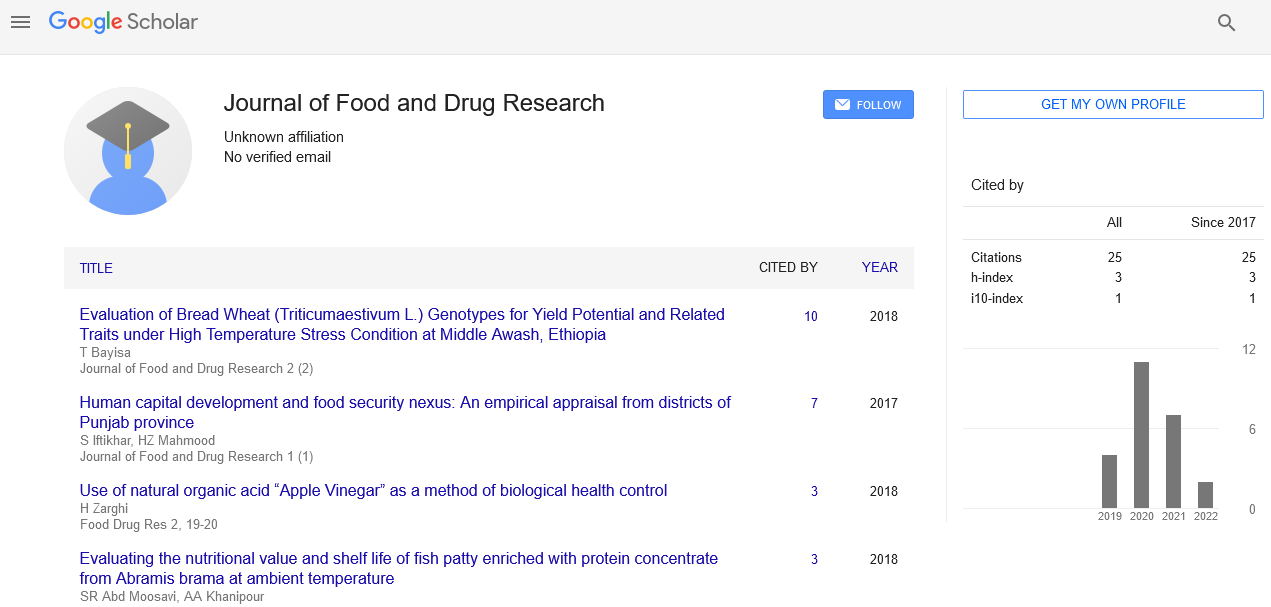Brief Introduction on Visual Detection Method
Received: 16-Sep-2017 Accepted Date: Sep 18, 2017; Published: 18-Sep-2017
Citation: Zhanmin Liu. Brief introduction on visual detection method. J Food Drug Res. 2017;1(1):10.
This open-access article is distributed under the terms of the Creative Commons Attribution Non-Commercial License (CC BY-NC) (http://creativecommons.org/licenses/by-nc/4.0/), which permits reuse, distribution and reproduction of the article, provided that the original work is properly cited and the reuse is restricted to noncommercial purposes. For commercial reuse, contact reprints@pulsus.com
Food Borne Pathogens
Food safety issue has increasingly engaged public attention for the continual detection of food-borne pathogens in market-sale foods. With the booming of people’s requirements of safe food, the detection of pathogens in food seems to attach vital importance.
Traditionally, the “Golden Standard” of bacteria detection is the cultivation method, and the method has an extremely reliable result. However, it would take much time to get the result and the limit of detection is not very satisfactory. Recently many methods based on immunofluorescence probe, a DNA microarray, surface enhanced laser desorption and ionization time of flight mass spectrometry, and whole-cell SELEX methods are time-consuming and may yield false-positive or falsenegative results.
Visual Detection
Visual detection refers to amplify the target gene using some protocols and reflect the positive results via color change. Of course, it will be better if the color change is more obvious and the most ideal situation is that this color change can be distinguished by naked eyes. Using this method, the limit of detection can be lower, the time-consuming can be shorter and the results more reliable.
According to the definition of visual detection, the whole detection can be divided into two parts: One is the target gene amplification, and the other is a color change. The target gene application mainly concludes the traditional PCR, isothermal amplification methods like LAMP (Loopmeditated thermal amplification), RCA (Rolling circle amplification) and so on. PCR method has a low limit of detection, but this technology has been limited because of the expensive instruments, which blocked the wider utilization of PCR amplification. After all, LAMP exhibit a huge advantage for the reason that only a simple heating blot is needed to accomplish the reaction. As to visual reaction, various reaction systems can be used, such as the G-quadruplex-hemin system, NaCl induced nanoparticle related visual system, chemical dye, and fluorescence dye in reaction. All the visual strategies can meet the requirements of color change which can be detected and quantified by easy instrument, even directed observed by naked eyes. Our research mainly focuses on this and our papers can be references. All the visual systems are based on the amplicons in the previous step.
Visual detection has been used to detect bacteria including Listeria monocytogenes, Staphylococcus aureus, viruses (Maize chlorotic mottle virus, Cucumber green mottle mosaic virus). However, nowadays false positive situation is still very common in the presence of contaminants in the detection process. Moreover, visual detection methods are mainly based on DNA amplification, but DNA still exists in dead bacteria, which makes it impossible to judge whether live bacteria occurs in food. In fact, live food-borne pathogen is vital fatal to human being in food to some extent, therefore many rules and laws in various countries in the world ban the sale of any food contaminant of pathogen.With the rapid development of microfluidic device, visual detection technology has been extensively explored combination with other nanomaterial and nanotechnologies, this strategy will be more reliable and applicable. After the easy detection device is invented, it will finally become an increasingly accepted and wildly used technology in food safety and biosecurity, for it improves people’s confidence towards food safety.






